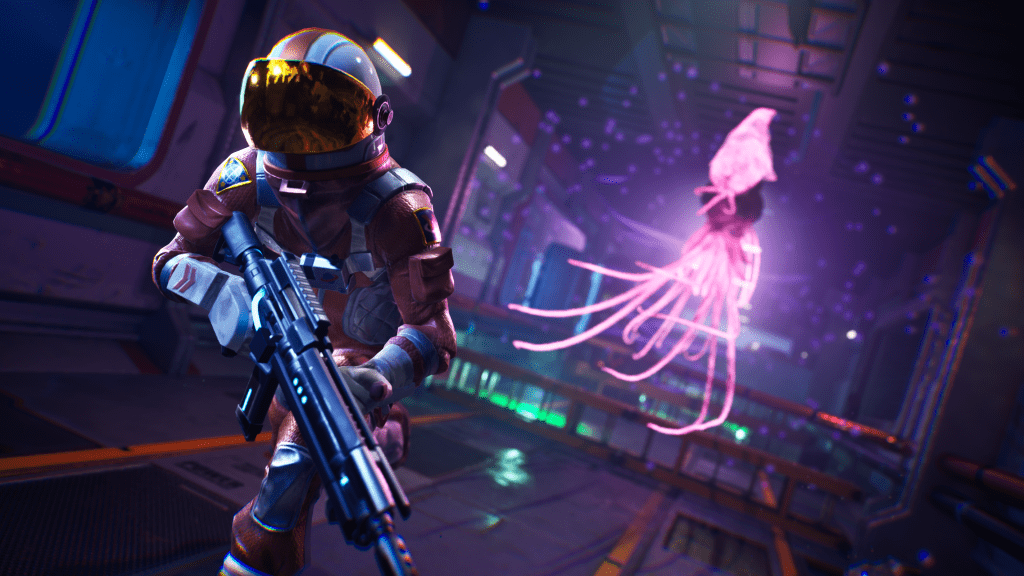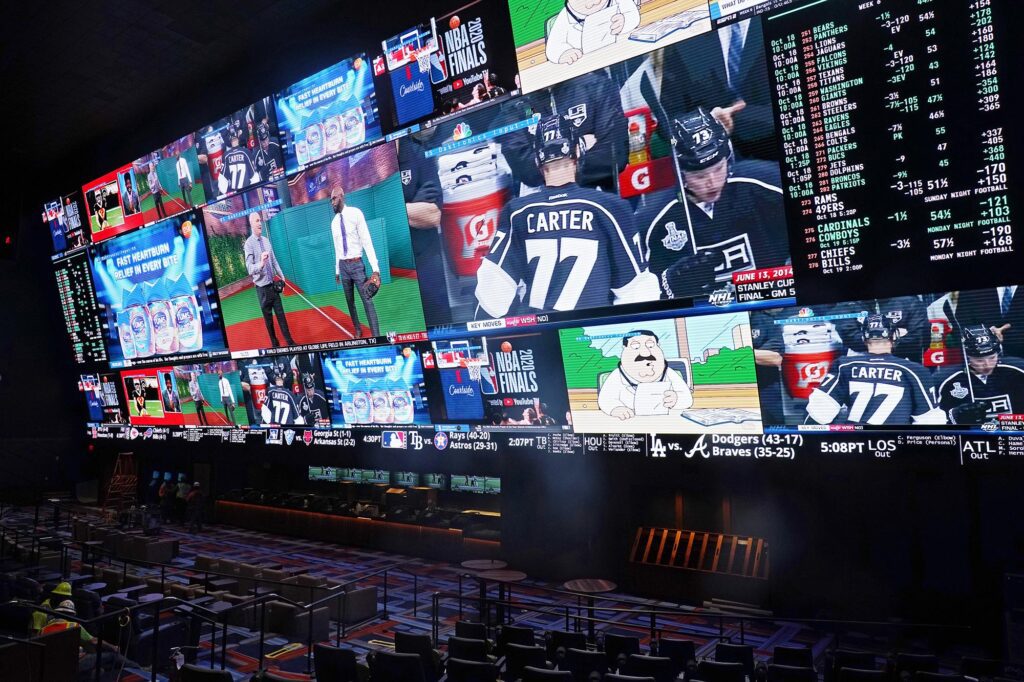Fortnite Gave Its Fans the Tools to Build a Whole Universe
IT’S NIGHTTIME, and you’re in a forest of tall trees and glowing mushrooms. There are others with you in this particular clearing, which appears to be lit up by fireflies. Before you can get your bearings, the sparks in the air begin to fade, and a giant screen comes into focus overhead. On it is the Australian singer and producer Tones and I kicking off the title track of her album Welcome to the Madhouse. “Welcome to a place you’ve never been/A place you’ve always dreamed of/But here nothing’s as it seems,” the song continues as you and your companions fly to a trippy, haunted-looking mansion with rave lights and impossible staircases like something out of M.C. Escher. The party is on.
Oh, and by the way, you’re in Fortnite.
The franchise, released by Epic Games in 2017, is known for its Battle Royale platform, which pits 100 competitors against one another in a shoot’em-up melee on a vibrant island teeming with fanciful weapons, vehicles, and gadgets. At the height of the pandemic, the entire planet seemed to be playing. Yet the company now seeks to establish a thriving metaverse like you’ve never seen before — and is banking on the gamers who made Fortnite a hit to make that happen.
Since 2018, Epic has offered Fortnite Creative, a sandbox-style mode that allows users to build their own playable maps. But it wasn’t until last March that it took major steps toward supercharging this user-generated content, or UGC, announcing a new revenue-sharing model, pledging 40 percent of the game’s net revenue — estimated to be in the billions annually — to people publishing their own games on the platform. (As of October, it’s paid out $120 million to these creators.) The company simultaneously unveiled Unreal Editor for Fortnite (UEFN), an application comprising a set of tools from Unreal Engine, the 3D-graphics framework used to develop Fortnite and previous hit games (and by Hollywood studios to create shows like The Mandalorian).
Thanks to these tools, it’s not just mini games these new developers are creating — it’s an entire interactive network. That’s why, even after the notorious collapse of Mark Zuckerberg’s proposed metaverse, Epic and its growing army of designers see themselves as collaborating on a distinct and promising successor, one that sprawls out organically. This time, it’s the citizens within a digital nation who get to run the show.
“Facebook has a ton of users, but they’re not gamers,” says Chad Mustard, a 40-year-old father of four who made the leap from Fortnite Creative to UEFN, and uploads much of his content to a YouTube channel, Mustard Plays, where he has more than 800,000 followers. Mustard got into the scene through family ties — his brother, Donald Mustard, was Fortnite’s chief creative officer at Epic until his retirement last September — but is thrilled about the notion of a snowballing, all-connected virtual world. “The only way a metaverse could ever exist is with user-generated content,” he contends. “Epic has taken their player base and said, ‘OK, we’re gonna unleash your creativity.’”
Mackenzie Jackson, 31, never imagined herself as a developer. “I was just a gamer,” she says. She and her brothers were always on the lookout for free titles, which drew them to Fortnite. But it was Fortnite Creative that really caught her attention. “That, for me, was eye-opening,” Jackson says. “I have the tools to make whatever I want.”
At first, Jackson saw it as a hobby, but in 2019, Epic asked if she wanted to help craft one of the Fortnite Welcome Hubs, portals where creators would be able to access their own games and those built by others. Jackson flew to Epic’s headquarters in Cary, North Carolina, where she met another creator, Simon Bell; that same year, the pair collaborated with esports brand 100 Thieves and sponsors including Uber Eats and Rocket Mortgage to launch the “first-ever commercial experience” in Fortnite.
That’s when they saw the potential for a full-time business, founding Alliance Studios, one of the premier consultancy groups for clients looking to break into the Fortnite ecosystem — all the while building experiences like the Tones and I concert.
The 2023 UEFN upgrade, according to Saxs Persson, executive vice president at Epic, came out of the “critical mass” of user ingenuity and advanced tech. He tells Rolling Stone that the company was pleasantly surprised by how it took off; 300 to 400 new “Islands” — Epic’s term for individual games — are published every day.
Jeremy Pedron, known online as “Squatingdog,” is among the prolific developers behind that boom. Having amassed a following by putting out a Fortnite companion app, he has a built-in audience for his maps, including “Fortnopoly,” a bare-bones colosseum environment that he fleshed out with Monopoly-style twists, and “Nope,” a deathrun game where players speed through a bedeviling array of killer traps.
One of Pedron’s most viral 2023 creations was a “Barbenheimer” map inspired by the concurrent summer theatrical run of the movies Barbie and Oppenheimer. It was an exercise in trying to bring outsiders with a view of Fortnite as nothing more than continuous combat into a future of limitless alternatives. “So when you’re asking the question, ‘I don’t want to play Battle Royale anymore’ — well, there’ll be Fortnite racing. There’ll be Fortnite Lego, there’ll be Fortnite music.”
“The metaverse is always going to be in gaming,” says Josh Benzing, CEO of 404 Creative, another bootstrapped company of Fortnite creators without much background in game design. “That’s where you need to be.”
Courtesy of 404 Creative
Benzing notes that with UEFN, his budding industry has gotten more competitive, with big-name influencers hiring devs to make them maps. “All of a sudden, they’re performing better than even studios like ours,” he says. (Persson says Epic, which pays creators according to how well their games attract and retain players, doesn’t view this arrangement as a “zero-sum game,” because everyone is “pulling in the same direction.”)
Despite any growing pains, Benzing sounds bullish, in part because celebrities flocking to the platform may indicate that it’s viable in the long term. “A lot of artists are creating their own independent experience,” he says. Snoop Dogg and his son Cordell Broadus, Benzing notes, recently launched Death Row Games to help diverse creators publish their work in Fortnite, opening yet another talent pool.
“It’s truly a new pioneership of what the players want,” Pedron says. “But also, what can we create that players don’t know they want yet?”





